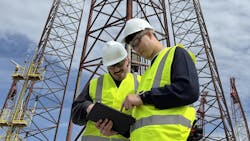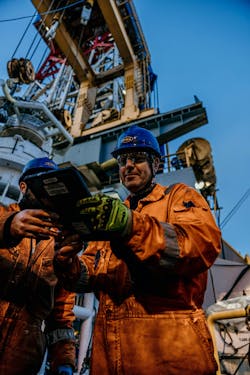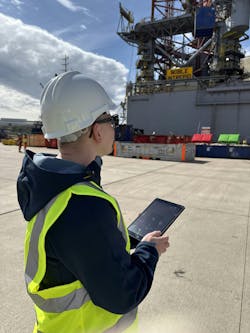Predictive AI project aims to reshape offshore safety management
By Adrian Brown, Fennex; and Dustin Stringer, Noble Corp.
In offshore energy operations, safety is not just a performance metric—it underpins operational continuity and license to operate. Yet despite decades of investment in behavioral safety programs and risk mitigation frameworks, the industry has remained largely reactive, relying on lagging indicators and post-incident analysis to inform decision-making.
That dynamic is now changing, as evidence by a collaboration between UK-based technology company Fennex and offshore drilling contractor Noble Corp. A five-year partnership has led to the development of AI-powered predictive safety technology, now fully implemented across Noble's offshore fleet. This collaboration has delivered measurable, fleet-wide improvements, including a 43% reduction in incident reporting and a 30% increase in workforce engagement.
This technology converts behavioral data into predictive risk assessments, enabling operators to prevent incidents. Machine learning enhances operational foresight and improves offshore safety.
Building the foundation
The journey began with the full digitization of Noble’s Behavior-Based Safety (BBS) program. Fennex deployed its AI-powered BBSS technology, a multilingual, mobile-enabled digital tool capable of capturing structured safety observations across more than 30 offshore assets in real time. By transitioning from paper-based forms to dynamic data capture, Noble’s HSE teams gained instant access to high-resolution insights into behavioral trends and emerging hazards.
Today, the system has logged more than 3.5 million safety observations, establishing one of the industry’s most extensive behavioral safety datasets.
Safety observations are not simply checklists; they are behavioral signals. AI excels at distinguishing actionable insights from operational noise.
Turning data into predictive foresight
Earlier this year, Fennex and Noble revealed the latest outcome of their collaboration—a real-time predictive safety dashboard, which has become an early warning system. Operation and HSE leadership teams can now see a 30-day potential incident prediction for each rig, compare relative risk across assets, and drill down into specific behavioral drivers like leadership engagement and corrective action quality.
Noble’s HSE team is no longer managing safety based on assumptions, as now they have concrete evidence and predictive foresight to guide where and how they intervene.
The most actionable insights the system surfaced include:
- Crews with high crew stability (65% or higher) experience significantly fewer incidents;
- Rig teams with active supervisory engagement—measured through balanced interventions—exhibit stronger safety culture; and
- Detailed corrective actions, rather than generic responses, correlate with measurable incident reduction.
These early findings have been field-validated, transitioning predictive modeling from theoretical promise to practical application.
Beyond compliance
The implications extend far beyond compliance or reporting efficiencies. This joint approach signals a paradigm shift—from managing what happened to managing what’s about to happen.
This kind of real-time operational intelligence empowers leaders with a proactive edge. It elevates frontline decision-making, reinforces leadership accountability, and fosters a safety culture where risks are seen and addressed before they manifest.
Perhaps most importantly, it repositions AI not as a future dream, but as a present-day imperative. Both companies are embracing AI's role but understand that it enhances human judgement rather than replacing it.
Why it matters
As offshore operators grapple with the dual pressures of energy security and decarbonization, operational resilience is under the microscope. Predictive safety, rooted in AI and enabled by robust digital infrastructure, is no longer a luxury—it’s a leadership mandate.
The platform-agnostic architecture adapts to various operational environments. After completing the pilot phase, Fennex and Noble are expanding the predictive safety technology to other operations.
About the Author

Adrian Brown
Adrian Brown is the founder and managing director of Fennex Ltd., a digital technology company that aims to advance safety and performance in the energy sector. With 25 years of international offshore drilling leadership, he now drives the development of innovative solutions for high-hazard industries.

Dustin Stringer
Dustin Stringer is the director of HSE performance at Noble Corp. and has been with the company for about 23 years. He oversees the Management System, HSE Applications development and support, and Data Analytics. Stringer has also directed the digital transformation of the HSE systems and worked to provide advanced analytics to all users.


